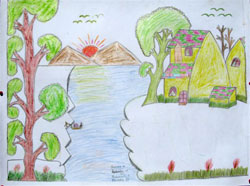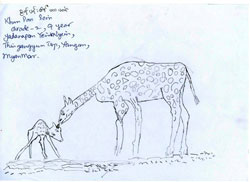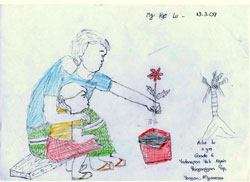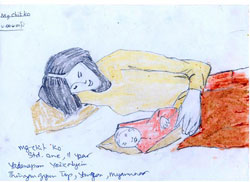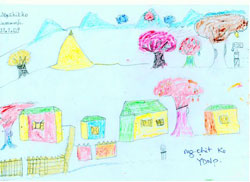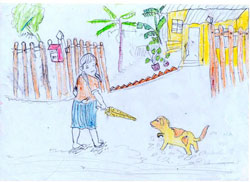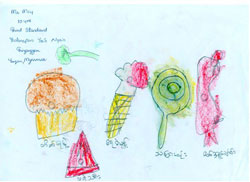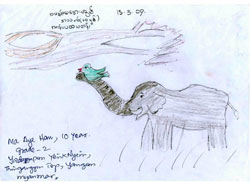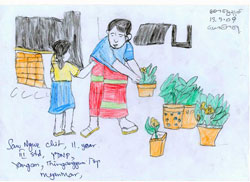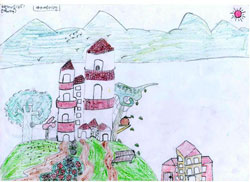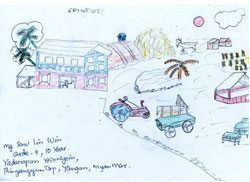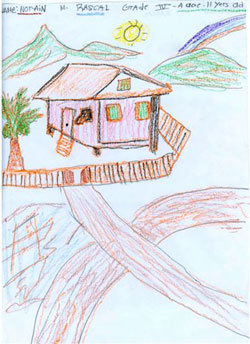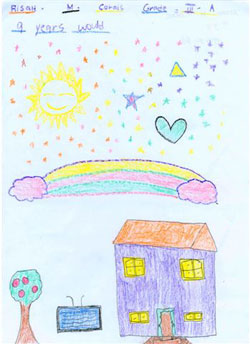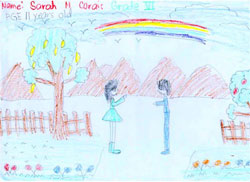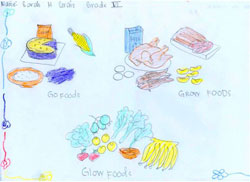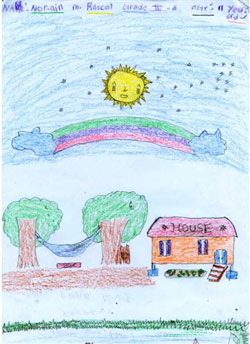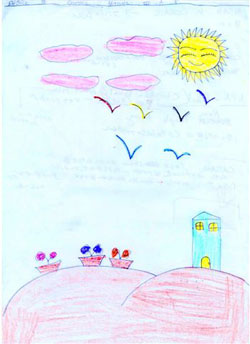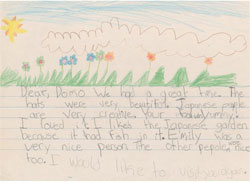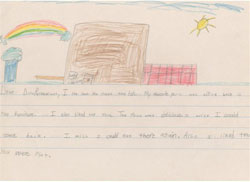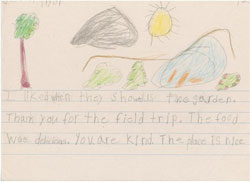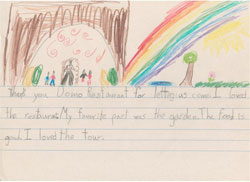What do you think of these drawings; what do you see? These pictures were drawn by children with very different cultural and social backgrounds.
Some of these drawings are from Mindanao Island in the Philippines, drawn by children living in a village torn by civil war. In the room adjacent to the room where the children sat drawing pictures, one of children’s grandfathers lay wounded from an ambush attack.
Some of these drawings are from Dhaka, Bangladesh by girls living in an orphanage under the poorest of conditions. These girls love to study even though they currently have no real classrooms, desks and very little in the ways of books, pencils and paper.
Some of these drawings are from Yangon, Myanmar where children live their lives at the orphanage from a very young age.
Some of these drawings come from Denver, Colorado USA, drawn by children visiting Nippon Kan on a cultural field trip.
Compare the drawings. Some are drawn in war, some in poverty, hunger and abandonment; others are drawn by children who have enough to eat and a safe place to call home.
It is interesting to me that all of these children from different backgrounds draw pictures of the same things; rainbows, singing birds, cute houses with windows, flowers, animals…and happy families.
For the children in the Philippines, Myanmar and Bangladesh, these drawings were drawn spontaneously with crayons, colored pencils and paper that I had given the children. They had no notice or direction from parents or teachers and I purposely did not give them erasers, so their drawings they made on their first try.
ALL of these children drew with innocence; directly from their hearts. There is something important we can learn from these children and we must always remember that soon the world will be in there hands. Here lies our greatest responsibility.
AHAN Nippon Kan Founder
Gaku Homma
Click any image to enlarge
BANGLADESH
Madrasa Orphanage for Girls; children age 6-7
Yadanapon Yeiknyein Buddhist orphanage; children ages 6-10
PHILIPPINES
Mor-Islamic meeting house; children ages 6-10
USA
Nippon Kan; children ages 8-9


